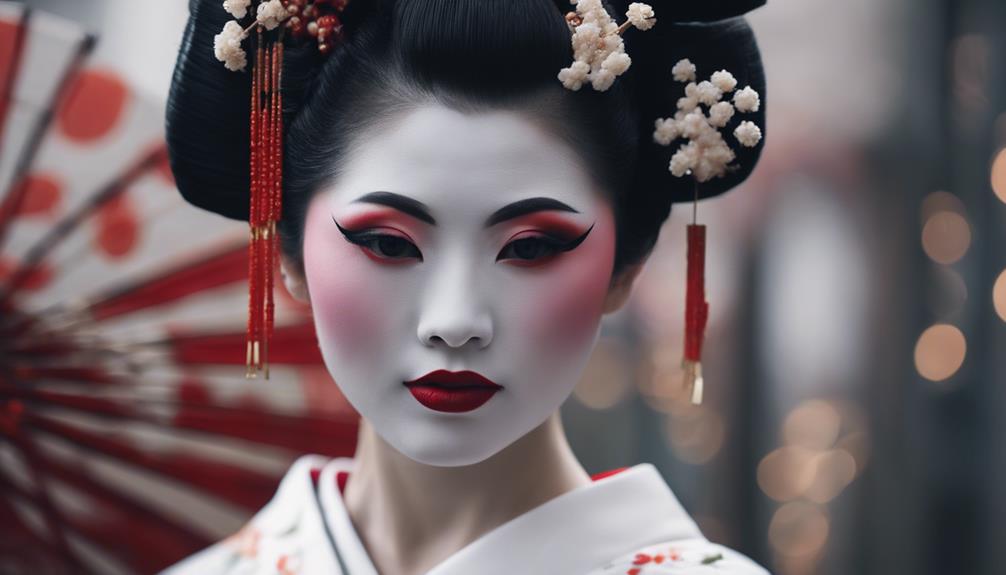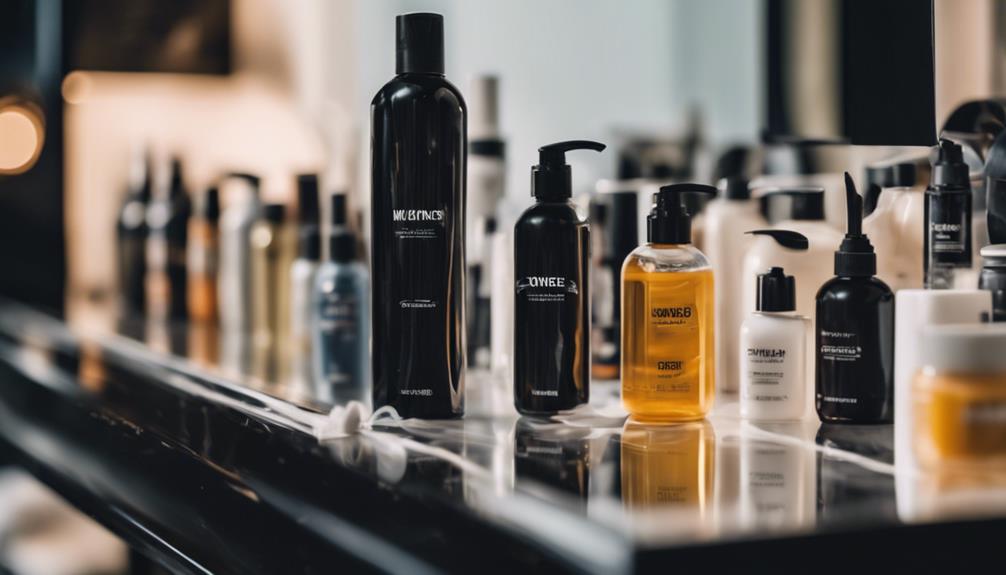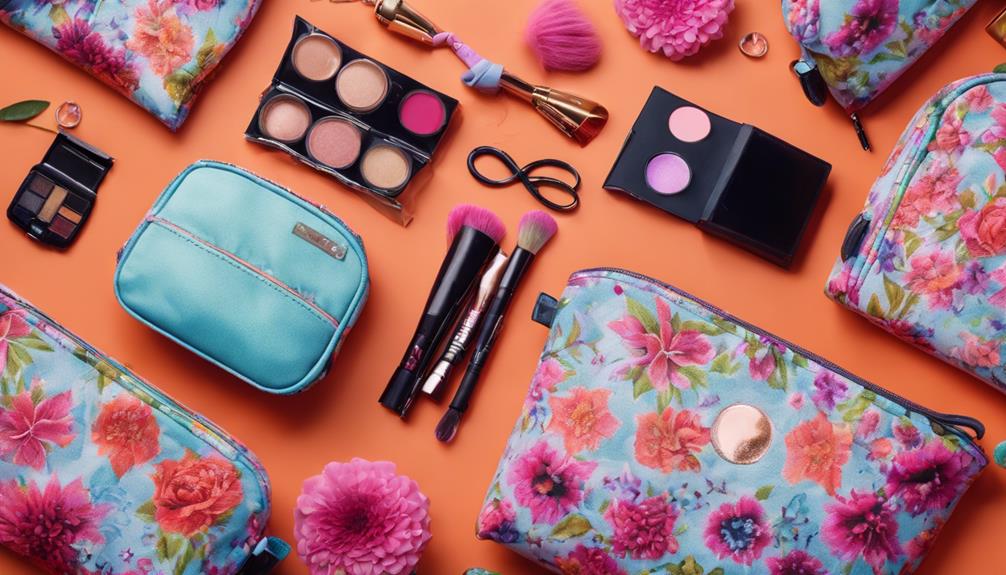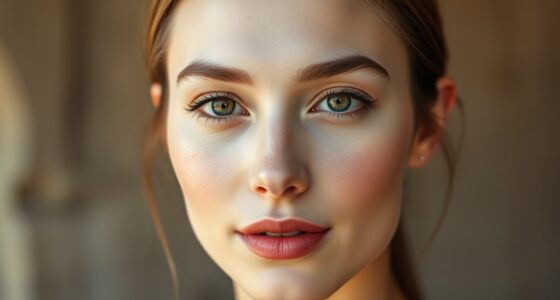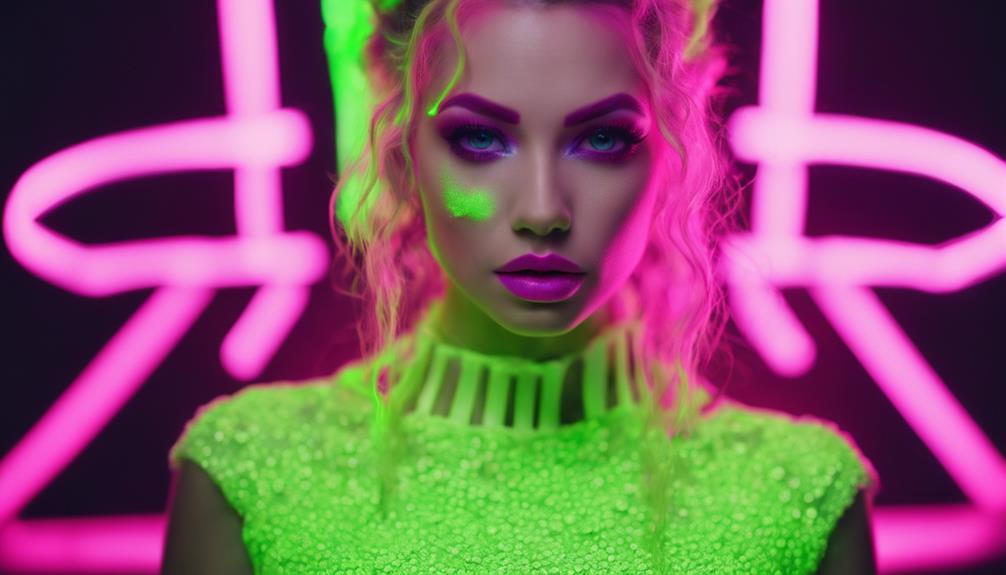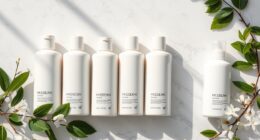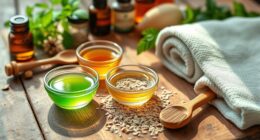Exploring Japanese beauty reveals a fusion of tradition and modernity. From Geisha's intricate updos and white powder to Samurai's symbolic styles, history influences current trends. Blend traditional and contemporary designs, mixing fades and braids with Kanzashi ornaments. Modern makeup highlights natural elegance while embracing K-beauty trends. Kawaii culture adds playful hues and cute accents, promoting self-expression through vivid styles. Gender-fluid beauty challenges norms, with androgynous looks and neutral styles. East meets West in a harmonious mix, reflecting cultural exchange and creativity. Discover more about traditional and modern Japanese hairstyles with makeup to uncover a vibrant world of beauty evolution.
Key Takeaways
- Japanese hairstyles blend tradition with modern trends like fades and braids.
- Makeup emphasizes natural beauty with innovative techniques and K-beauty influences.
- Gender fluidity reflected in gender-neutral styles and makeup catering to diverse identities.
- Fusion of East and West in beauty aesthetics creates unique Japanese looks.
- Kawaii culture inspires playful hairstyles with colorful dyes and whimsical accessories.
History of Japanese Hairstyles
In exploring the history of Japanese hairstyles, we witness a fascinating evolution across various historical periods, each reflecting unique societal influences and norms.
During the Meiji era, a significant shift occurred in Japanese hairstyling. The Meiji period marked a change towards modernization and westernization, impacting traditional hair customs. The government mandated shorter haircuts as a symbol of progress and alignment with Western standards. This decree aimed to distance Japan from its feudal past and align the nation with the modern world.
The Meiji era hairstyles reflected a departure from the elaborate and intricate styles of previous periods, emphasizing simplicity and practicality. This shift symbolized a broader transformation in Japanese society, where customs and appearances were adapted to meet the demands of a changing world.
The hairstyles of the Meiji era stand as a proof of Japan's willingness to embrace change and modernity, leaving behind centuries-old traditions in favor of progress and innovation.
Geisha Hairstyles and Makeup
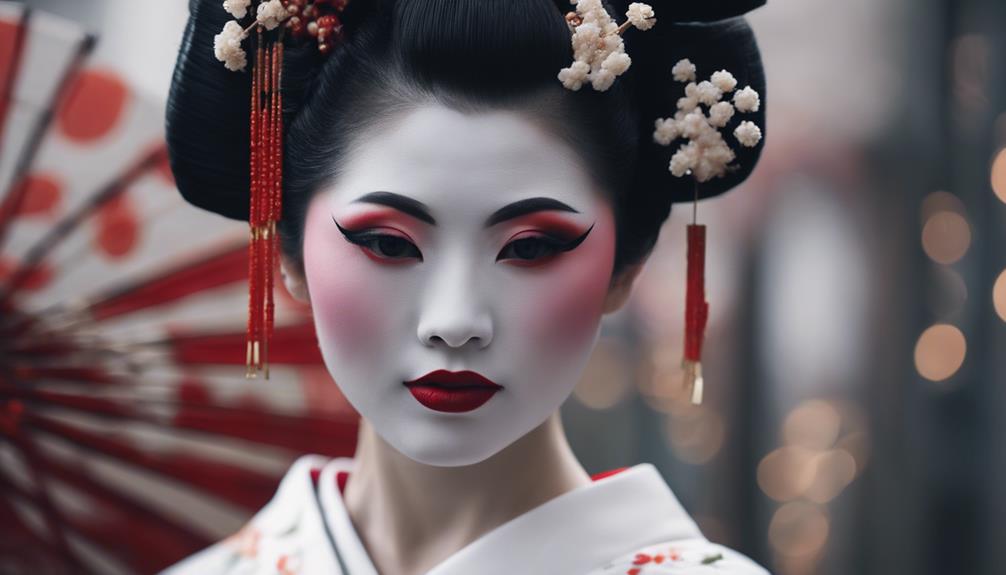
Geisha hairstyles are known for their intricate updos adorned with elaborate hair ornaments, showcasing a blend of elegance and artistry.
Traditional geisha makeup involves a careful application of white face powder, red and black accents highlighting the eyes and lips, and well-defined eyebrows, creating a timeless and iconic look.
These elements aren't just cosmetic but hold deep cultural significance, symbolizing the dedication and craftsmanship required in the centuries-old art of geisha performance.
Geisha Hair Ornaments
Crafted with intricate detail, the kanzashi hair ornaments are essential elements in traditional geisha hairstyles, symbolizing artistry and elegance. These ornate accessories, made from materials like silk, metal, and lacquer, play a significant role in enhancing the beauty of geisha hairstyles. Each kanzashi holds symbolic significance, reflecting the geisha's rank and status within Japanese beauty traditions.
The meticulous arrangement of kanzashi in a geisha's hairstyle requires skill and precision to create stunning and elaborate designs. Geisha adorn their hair with these colorful ornaments, showcasing not only their craftsmanship but also their dedication to upholding cultural customs. The process of styling these hair ornaments is a meticulous art form, with each placement carefully chosen to achieve a harmonious and visually appealing look.
In the world of Japanese beauty, kanzashi hair ornaments stand out as iconic symbols of tradition and grace, adding an element of sophistication to the overall geisha aesthetic.
Geiko Traditional Makeup
The Geiko traditional makeup complements the intricate updos and hair ornaments of geisha hairstyles, enhancing their elegance and grace. Geiko's traditional makeup includes a white base called oshiroi, red and black accents around the eyes, and a bold red lip. This makeup style aims to create a porcelain doll-like appearance, a hallmark of Japanese traditional beauty. Geisha's dedication to preserving Japanese cultural heritage is evident in their elaborate hairstyles and makeup, which have been passed down through generations. The timeless beauty of Japanese tradition is showcased in the meticulous artistry of geiko makeup and hairstyles.
—
| Geiko Traditional Makeup | |
|---|---|
| Oshiroi | White base |
| Eye Makeup | Red and black accents |
| Lip Color | Bold red lip |
| Purpose | Create porcelain doll-like appearance |
| Heritage | Passed down through generations |
Samurai Hairstyles Evolution
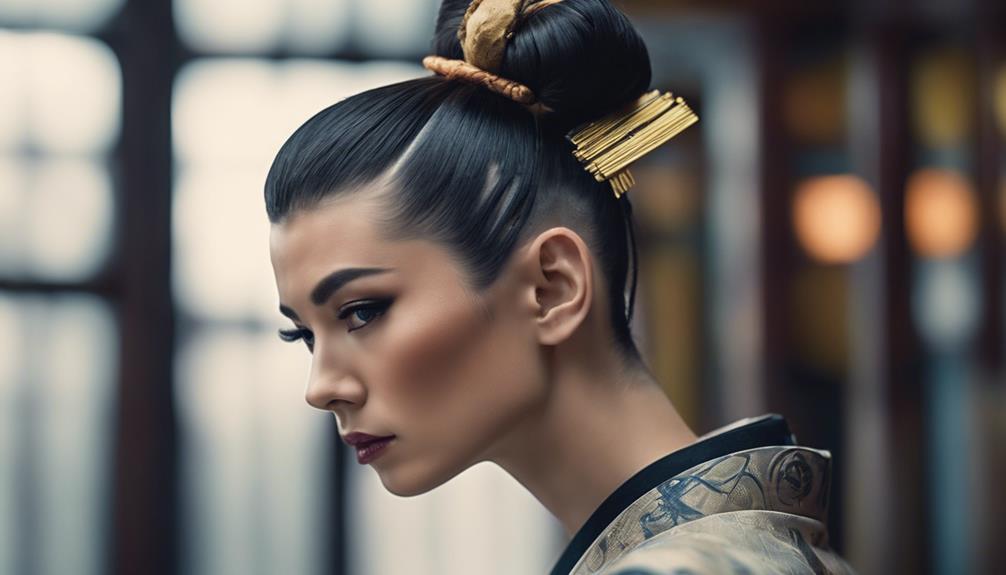
Samurai hairstyles have undergone significant evolution throughout Japanese history. From the humble topknots of the Kamakura period to the intricate chonmage styles of the Edo period, these hairstyles weren't just fashion choices but also symbols of status and honor.
Today, modern interpretations blend historical accuracy with creative flair, offering a glimpse into the rich heritage of samurai culture.
Samurai Hairstyles Overview
Evolved over time, the hairstyles of samurais underwent significant transformations, reflecting changes in societal norms and status symbols. During the Kamakura Period, the topknot became a symbol of honor and status among samurai warriors. The Edo Period introduced a variety of styles, with main ones like hyogo, shimada, katsuyama, and kogai gaining popularity. These hairstyles were not just fashion statements but also conveyed the wearer's social standing and occupation. Samurai hairstyles were strictly regulated based on one's rank and position within the samurai class, showcasing the importance of hierarchy and tradition in Japanese society.
To provide a clearer overview, let's break down some key samurai hairstyles from history:
| Hairstyle | Time Period |
|---|---|
| Topknot | Kamakura |
| Hyogo | Edo |
| Shimada | Edo |
| Katsuyama | Edo |
Historical Samurai Hair
Shifting from simple topknots to elaborate styles with various accessories, samurai hairstyles underwent significant evolution throughout Japanese history. The samurai, known for their honor and status, used hairstyles as symbols of their identity and affiliation. In the Kamakura period, samurai wore topknots that signified their rank and allegiance. These hairstyles evolved over time, becoming more intricate during the Edo period. Samurai hairstyles often included elements like swords, combs, and hairpins, showcasing the warrior's identity and loyalty. Women of the samurai class also had distinct hairstyles, reflecting their marital status, social standing, and regional traditions.
The hairstyles of samurai were more than just a fashion statement; they represented the values and structure of the warrior class. Discipline, loyalty, and honor were essential aspects of samurai culture, and their hairstyles were a visual embodiment of these principles. The evolution of samurai hairstyles mirrored the changing times and the enduring traditions of the warrior class.
Modern Interpretations Today
Incorporating elements of traditional topknots and shaved heads, modern interpretations of Samurai hairstyles today often blend historical significance with contemporary styling techniques.
Samurai hairstyles have undergone a transformation, with variations that merge the essence of traditional warrior styles with a modern flair. These contemporary Samurai hairstyles can range from sleek undercut designs to imaginative takes on classic warrior-inspired looks.
Some individuals opt to fuse Samurai elements with current trends, like fades, textured cuts, or intricate braiding methods, creating unique and personalized styles.
The impact of Samurai hairstyles resonates in present-day fashion and pop culture, reflecting a fusion of historical warrior aesthetics and contemporary hairstyling practices.
This evolution showcases how traditional Samurai hairstyles continue to inspire and influence modern hair trends, demonstrating a harmonious blend of the old and the new in the world of hairstyling.
Modern Japanese Hair Trends
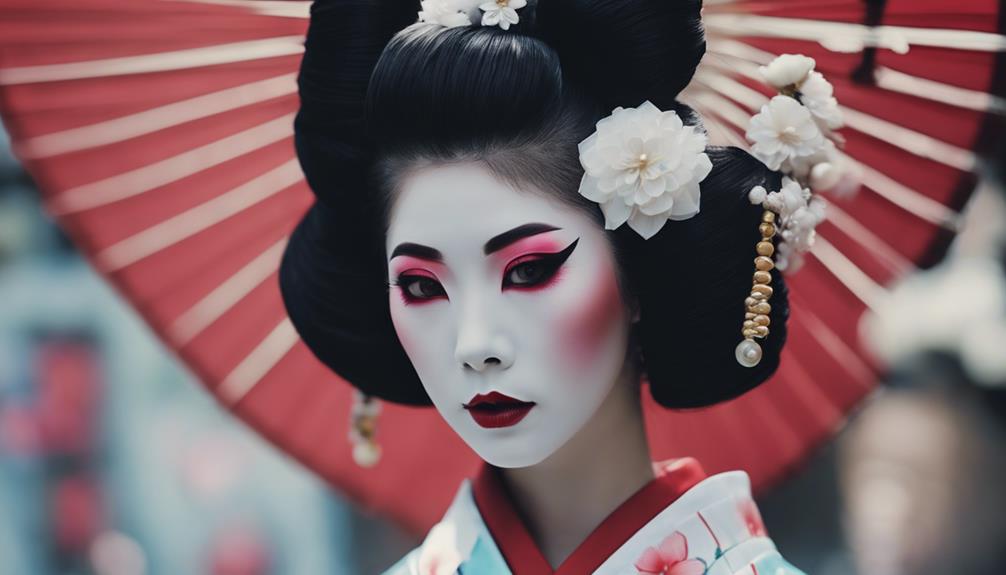
Our exploration of modern Japanese hair trends reveals a fusion of traditional and contemporary styles, reflecting a dynamic evolution in hairstyling preferences. Japanese women embrace a variety of modern hairstyles, with the 'hime cut' being a popular choice. This style features blunt, straight-across bangs and long, flowing hair, exuding elegance and grace.
Additionally, short bob cuts, layered styles, and vibrant hair colors are trendy among the younger generation, showcasing a blend of creativity and individuality.
In Japan, women also incorporate various hair accessories like ribbons, clips, and headbands to enhance their hairstyles with cute or elegant accents. These accessories add a personal touch and allow for experimentation with different looks.
On the other hand, men in Japan opt for sleek and stylish haircuts, including textured styles, undercut designs, and sharp lines for a modern and sophisticated appearance. The evolving trends in Japanese hairstyling reflect a harmonious balance between tradition and innovation, catering to diverse preferences and fashion sensibilities.
Traditional Makeup Techniques
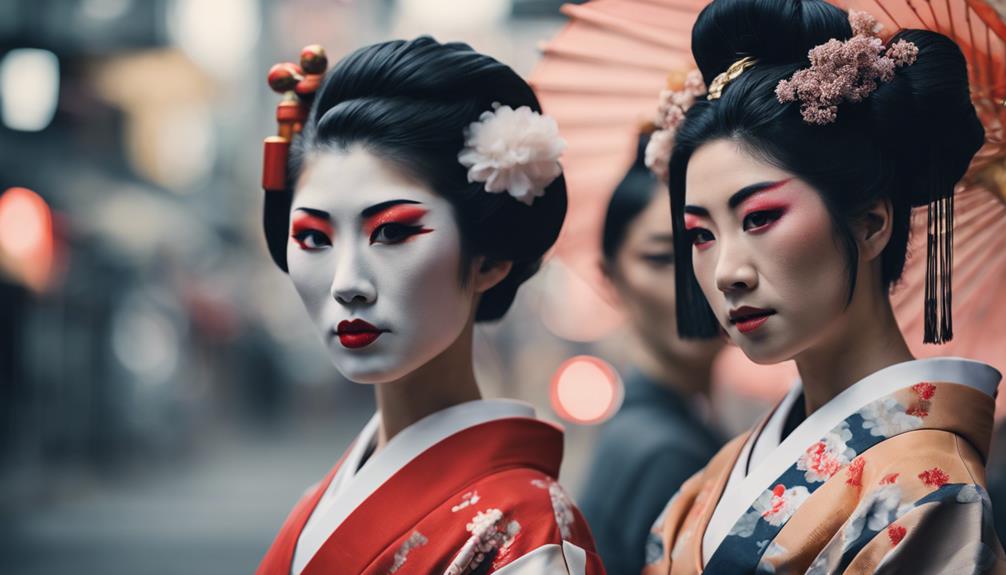
Delving into the world of traditional Japanese beauty practices reveals a rich tapestry of makeup techniques deeply rooted in cultural heritage and artistry. Traditional Japanese makeup is characterized by its focus on enhancing natural beauty and creating an aura of elegance and refinement.
Here are some key elements of Japanese makeup:
- A white base, typically made from rice powder, is used to achieve a flawless complexion.
- Red and black pigments are commonly applied to the lips and eyes for a striking look.
- Geisha and Maiko often use a distinctive red lip color known as 'bintsuke-Abura' in their makeup routines.
- Emphasized eyebrows play a significant role in traditional Japanese makeup, with thick and straight eyebrows being favored.
- The overall goal of Japanese makeup is to highlight the natural features of the face while adding a touch of sophistication and grace.
Contemporary Makeup Styles
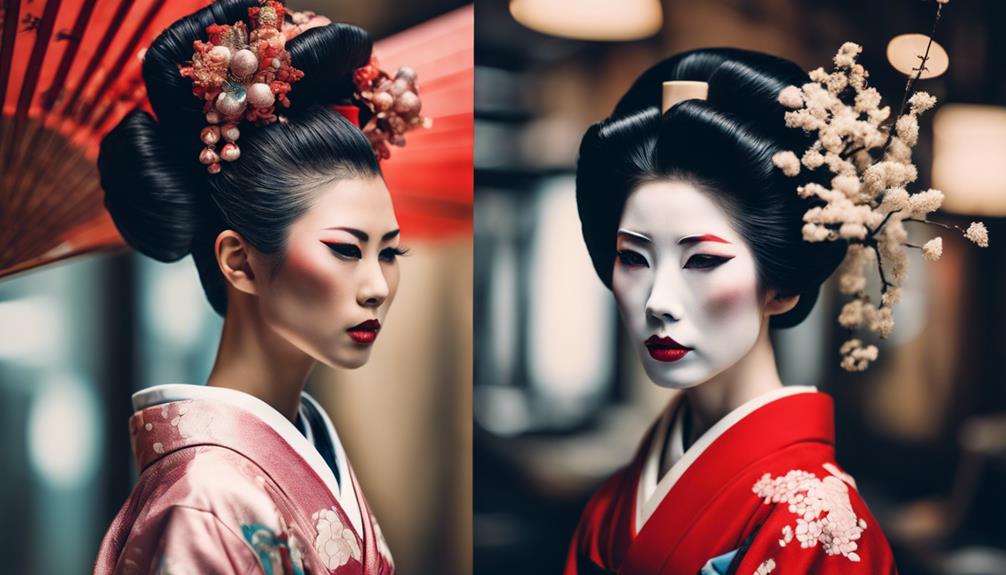
Modern Japanese makeup styles often prioritize a natural look with a focus on flawless skin and subtle enhancements. Popular trends in Japan include soft, gradient lip colors, subtle blush application, and well-defined eyebrows. Japanese makeup artists often employ innovative techniques like 'eye contouring' to give the appearance of larger, more defined eyes.
In recent years, influences from K-beauty trends, such as dewy skin and gradient eyeshadow, have found their way into modern Japanese makeup looks. This fusion of styles has resulted in a unique blend that embraces individuality and creativity while incorporating traditional techniques with global beauty influences.
Contemporary Japanese makeup puts a strong emphasis on enhancing one's natural features rather than masking them. The overall goal is to achieve a look that's fresh, youthful, and radiant.
Influence of Kawaii Culture
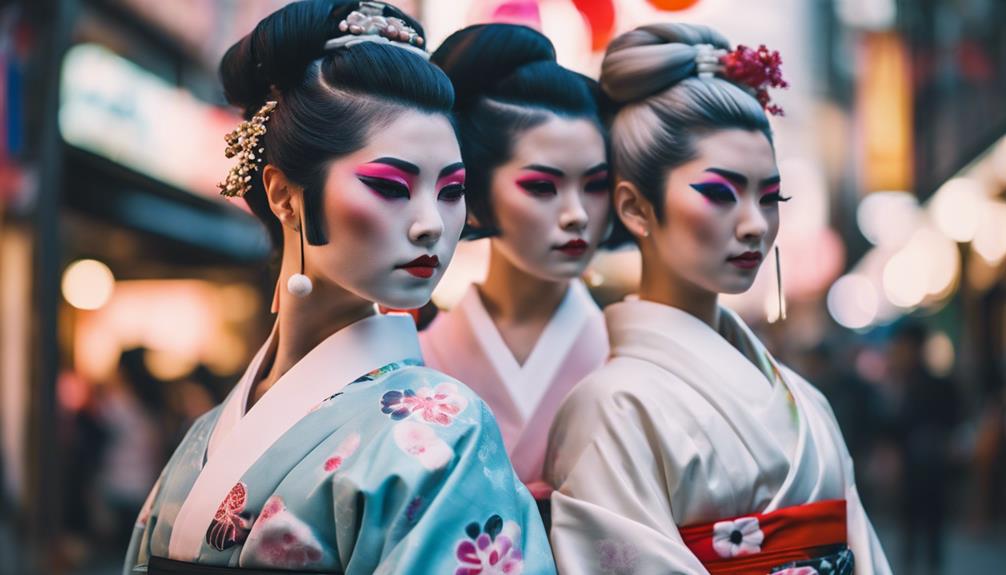
Drawing inspiration from the vibrant and playful world of Kawaii culture, Japanese hairstyles and makeup embrace a unique blend of cuteness and creativity. Kawaii culture in Japan emphasizes the essence of cuteness and innocence in fashion and beauty trends.
This influence can be seen in various aspects of Japanese hairstyles and makeup, including:
- Colorful hair dyes that add a fun and playful touch to traditional styles.
- Playful accessories like ribbons, bows, and cute hair clips that enhance the overall look.
- Kawaii makeup focusing on creating big, doe-like eyes, rosy cheeks, and glossy lips for a youthful appearance.
- Incorporation of pastel colors and whimsical designs, popularized by Harajuku street fashion, into hairstyles and makeup choices.
- Kawaii culture encourages self-expression through unique and imaginative hairstyles and makeup, allowing individuals to showcase their creativity and personality in a fun and adorable manner.
Gender Fluidity in Beauty
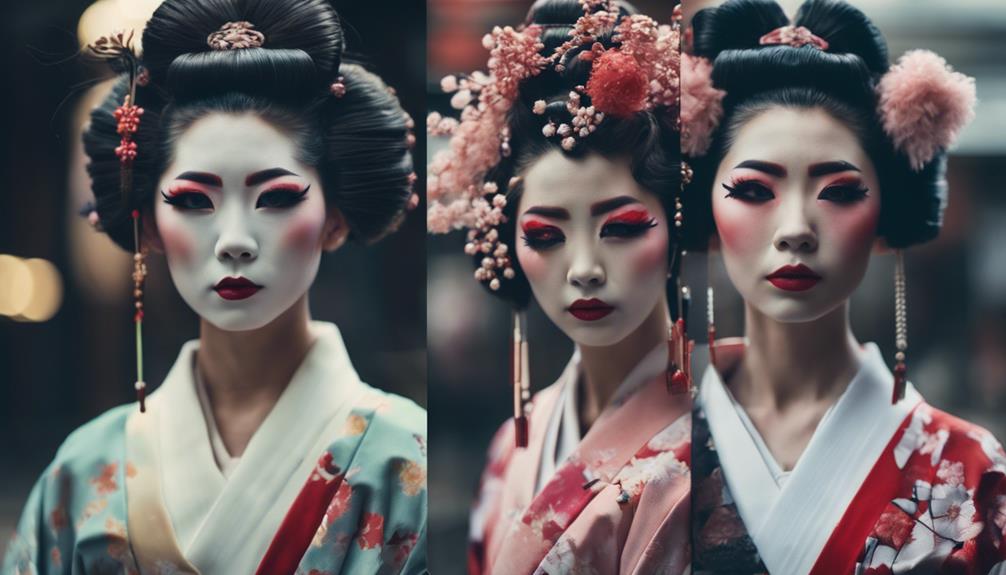
Exploring the evolving landscape of Japanese beauty, we witness a fluidity in gender expression through contemporary hairstyles and makeup choices. Gender fluidity in Japanese beauty is evident as modern trends embrace androgynous styles, blending traditional masculine and feminine aesthetics.
Makeup brands in Japan are now catering more to gender-fluid consumers, offering a diverse range of products suitable for all identities. This shift towards gender-neutral hairstyles and makeup looks challenges conventional beauty standards, promoting inclusivity and personal expression.
Japanese pop culture and fashion influencers play an important role in promoting gender fluidity in beauty, encouraging a more accepting and diverse approach to self-expression. By breaking away from rigid gender norms, individuals are empowered to explore and showcase their unique identities through innovative beauty trends.
This growing acceptance and celebration of gender fluidity in Japanese beauty reflect a broader societal shift towards inclusivity and acceptance of diverse expressions of identity.
Fusion of East and West
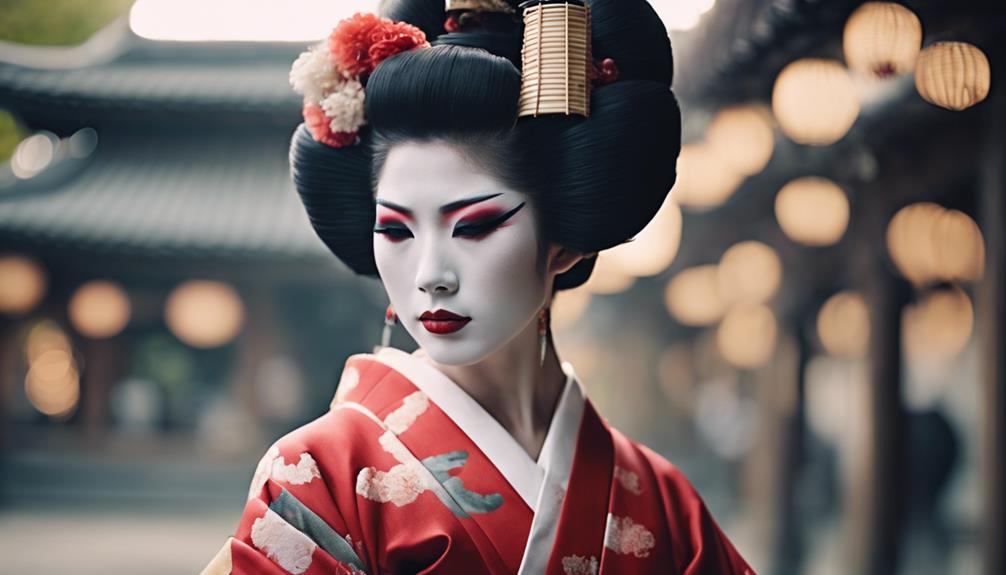
In the world of Japanese hairstyles and makeup, a seamless fusion of East and West emerges through the incorporation of traditional Japanese elements with modern Western influences. This blending of cultural aesthetics results in a harmonious mix that showcases the evolving global beauty trends and the cultural exchange between different societies.
Here are some key aspects of the fusion of East and West in Japanese hairstyles and makeup:
- Modern Japanese hairstyles often combine Western cutting and styling techniques with traditional Japanese elements.
- Makeup trends in Japan integrate traditional Japanese beauty standards with contemporary Western makeup techniques.
- The incorporation of Western makeup products into Japanese beauty routines highlights the fusion of different cultural beauty practices.
- Japanese culture embraces the fusion of East and West, reflecting a blend of traditional and modern influences in beauty aesthetics.
- The evolving landscape of Japanese hairstyles and makeup mirrors the dynamic nature of cultural exchange in the beauty industry.
Celebrity Beauty Icons
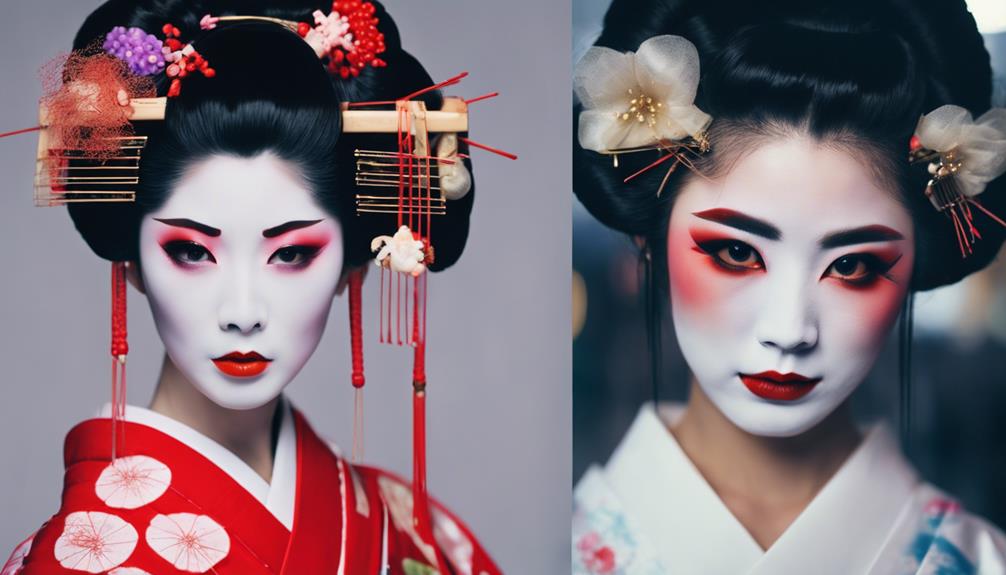
Who are the influential celebrity beauty icons in Japanese culture today?
Japanese women like Kyary Pamyu Pamyu and Kiko Mizuhara stand out as prominent figures in the beauty and fashion industry. Known for their daring and inventive makeup styles, these celebrities push boundaries by incorporating vibrant colors, intricate designs, and unconventional looks to showcase their unique personalities.
Kyary Pamyu Pamyu, a well-known J-pop singer and model, captivates audiences with her avant-garde makeup choices and eccentric fashion sense. On the other hand, Kiko Mizuhara, a versatile model and actress, garners admiration for her flawless complexion, effortless beauty, and adaptable makeup styles.
These celebrity beauty icons play an important role in shaping contemporary Japanese beauty trends and serve as a source of inspiration for makeup enthusiasts globally. Their fearless approach to beauty encourages individuals to embrace creativity and individuality in their makeup routines, making them influential figures in the world of Japanese beauty culture.
Frequently Asked Questions
Can Traditional Japanese Hairstyles Be Worn by Anyone Today?
Traditional Japanese hairstyles are rooted in history and can still be worn by anyone today. These styles showcase intricate designs and cultural significance that transcend time.
What Are the Common Misconceptions About Geisha Makeup?
Common misconceptions about geisha makeup include the belief that it's solely used to hide flaws, when in reality it serves as a form of artistic expression.
Additionally, some may think that geisha makeup is easy to apply, but it actually requires skill and training to achieve the intricate designs.
It's important to understand that geisha makeup is a traditional art form with deep cultural significance, not just a cosmetic routine.
How Did Samurai Hairstyles Influence Modern Japanese Hair Trends?
Samurai hairstyles greatly influenced modern Japanese hair trends. Their intricate styles and grooming practices set the stage for the evolution of traditional and contemporary Japanese hairstyles.
As time passed, these influences blended with other cultural elements, resulting in a diverse range of hair trends seen today. This fusion of historical and modern influences continues to shape the hairstyles of Japanese people, showcasing a unique blend of tradition and innovation.
Are There Any Cultural Taboos Related to Makeup in Japan?
In Japan, there are some cultural taboos related to makeup. For example, heavy makeup is often frowned upon in more conservative settings, as it can be seen as inappropriate or unprofessional.
Additionally, wearing makeup that's too flashy or bold may be considered disrespectful, especially in formal or traditional settings.
It's important to be mindful of these cultural norms when applying makeup in Japan to show respect for the local customs and traditions.
Which Historical Figures Influenced the Fusion of East and West Beauty Styles?
Influential historical figures, such as Queen Victoria and Empress Dowager Cixi, played a significant role in blending East and West beauty styles. Their fashion choices and personal preferences influenced the fusion of traditional Japanese aesthetics with modern Western trends.
Conclusion
To sum up, Japanese hairstyles and makeup have evolved over centuries, blending traditional techniques with modern trends. In recent years, there has been a growing trend of matching makeup with anime hairstyles, as inspired by popular Japanese animated series. This has led to a fusion of traditional and contemporary styles, with colorful and playful makeup looks complementing bold and unique hairstyles. The combination of these elements reflects the creativity and innovation of Japanese beauty trends, showcasing a balance of tradition and modernity.
From the intricate hairstyles of geishas to the sleek looks of modern fashion icons, Japanese beauty continues to captivate and inspire.
Whether embracing the elegance of the past or experimenting with cutting-edge styles, Japanese beauty culture remains a fascinating blend of tradition and innovation.
Explore the world of Japanese beauty and discover the timeless allure of its unique hairstyles and makeup trends.
